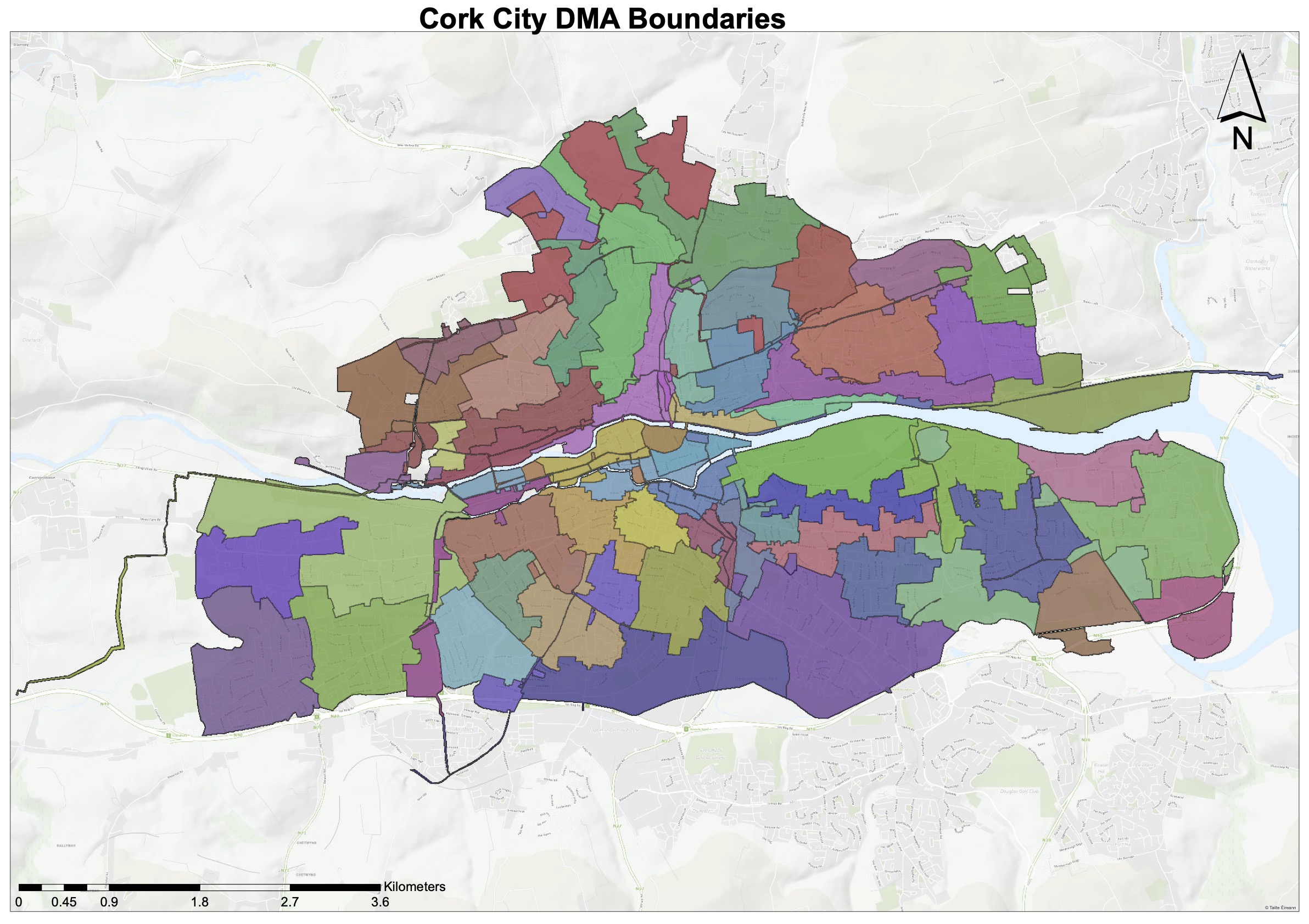Work Underway to Reduce Instances of Discolouration
We are working hard and prioritising remedial works to reduce instances of discolouration by addressing the underlying causes. It will take time to resolve as there is no quick easy fix when upgrading and modernising a water infrastructure that has been in place for over 100 years. While we are implementing all available measures to avoid and minimise occurrences of discoloured water, undertaking works to resolve discolouration issues by replacing these old pipes will take many decades to complete. Intrusive works to replace the old pipes result in disruption to the daily social and economic life of the city and a balance must be achieved.
Our dedicated Cork Water Quality Taskforce is coordinating a multi-initiative response to manage the current challenge while simultaneously future proofing the overall network. These measures include:
- Targeted flushing programme and treatment process optimisation
- Increased sampling
- Water main replacement
- €1.6 million additional investment in new treatment processes at the Lee Road Water Treatment Plant including:
- Manganese removal on the source water (in place since December 2024)
- Alkalinity conditioning on the treated water (on track for completion mid-2025)
1. Targeted Flushing Programme and Treatment Process Optimisation
A proactive flushing programme has been put in place targeting the areas impacted the most by discolouration. Under this programme, a full flushing plan is designed for the District Meter Area based on network models. Please see map to find your DMA. The flushing programme typically takes 4-6 weeks to carry out in a DMA. By optimising valve operations and flow velocities, large quantities of sediment that has become lodged in the aging cast iron mains are removed. This is a very different operation to the reactive flushing work that takes place following localised discolouration reports.
While not seen as the long-term solution, this targeted flushing has been successful in mitigating the impacts on customers in the short term. UÉ are seeing a positive trend in areas that have been flushed to date based on discolouration report numbers and proactive callbacks to customers. Areas will continue to be prioritised based on the numbers of reports of discolouration received.
In addition to proactive flushing programme a list of follow-on works have been identified. These include valve replacements and revised network configurations using modelling techniques, to optimise flow velocities and pressures and minimise sediment disturbance. These follow-on works will also lead to further improvements in wider network water quality.

2. Increased Sampling
To protect public health, Uisce Éireann has increased sampling and testing, including at customers’ taps, on the network and operational sampling at the water treatment plant. This provides reassurance that the water is safe to drink once running clear and assists with investigations into discolouration reports.
3. Water main replacement
The mains rehabilitation programme is well underway in Cork City. These works will lead to a reduction in leakage and improvement in water quality.
4. Investment in new processes at the Lee Road Water Treatment Plant
The Lee Road Water Treatment Plant provides approximately 70% of Cork City’s total treated water and is fully compliant with water treatment standards nationally and globally.
Drinking water treatment at the site began in 1879. Since then, there had been several upgrades to the facilities, but no major upgrades since the 1950s. The old Lee Road Water Treatment Plant had long term issues that needed to be addressed through the provision of a new treatment plant. It was on the Environmental Protection Agency’s Remedial Action List (RAL) for many years due to the risk that existed to drinking water quality. Following completion of the upgrade, the EPA welcomed the improvement in the safety and security of a major water supply to citizens in our second largest city and removed the supply from the RAL.
The manganese reduction step is now installed and operational on site, allowing teams to monitor incoming water and adjust manganese levels when necessary to ensure they remain within recommended limits. This was expediated following the detection of elevated levels of manganese in the source water last year. A new water conditioning system, designed to improve the interaction between treated water and the city’s aging cast iron water pipes, is also due for completion in mid 2025. These new processes represent an additional investment of €1.6million and should significantly improve instances of discolouration across the city.